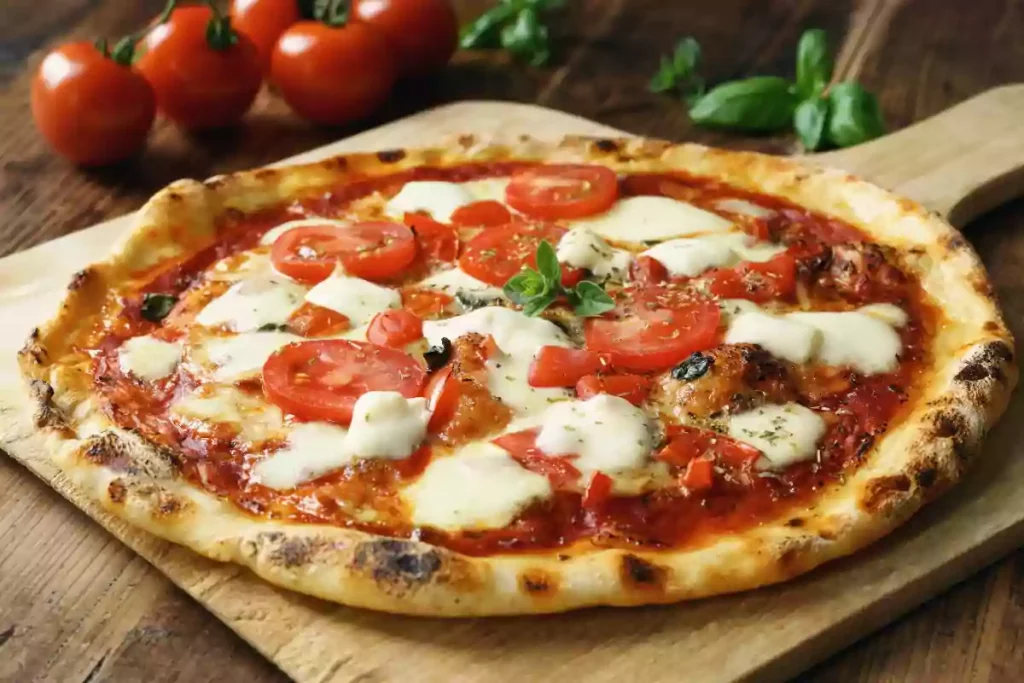When it comes to Italian cuisine, few dishes are as universally beloved as pizza. While pizza has become a global phenomenon, the essence of an authentic Italian pizza is found in its simplicity, quality ingredients, and time-honored techniques passed down through generations. Whether you’re enjoying it in the heart of Naples or at an Italian pizzeria in your hometown, the experience of eating a truly authentic pizza transports you straight to Italy. This article delves into the history, ingredients, and methods that make Italian pizza an art form, offering insight into what makes the perfect pizza and where to find it.
1. The Birth of Pizza: A Taste of Tradition
Pizza has deep roots in Italy, particularly in Naples, where it first gained popularity. The history of pizza dates back to the late 18th century, when the flatbread topped with tomatoes, cheese, and various toppings began to gain traction as a street food. In 1889, pizza reached new heights when Raffaele Esposito, a renowned pizzaiolo (pizza maker), crafted the famous Margherita pizza in honor of Queen Margherita of Savoy. The pizza was topped with fresh mozzarella, tomatoes, and basil, symbolizing the colors of the Italian flag.
This marked the beginning of what is now known as Neapolitan pizza, which adheres to strict guidelines set by the Associazione Verace Pizza Napoletana (VPN). To this day, Neapolitan pizza is considered the gold standard for authenticity.
Key Features of Neapolitan Pizza
- Thin, soft, and chewy crust: The dough is made with high-quality flour, water, salt, and yeast, and it undergoes a long fermentation process, typically lasting 24 hours.
- Simple toppings: Traditional Neapolitan pizza uses only a handful of fresh ingredients, such as tomatoes, mozzarella di bufala (buffalo mozzarella), fresh basil, and extra virgin olive oil.
- Wood-fired oven: The pizza is cooked in a high-temperature wood-fired oven, giving it a characteristic charred crust and delicate texture.
2. The Art of Pizza Dough: Crafting the Perfect Base
The foundation of any great pizza is the dough. To create the perfect pizza dough, it’s important to use the right flour, the correct amount of yeast, and allow the dough to ferment for just the right amount of time. Authentic Italian pizza dough is known for being light, airy, and slightly chewy, with a crisp crust that doesn’t overpower the toppings.
The Ingredients for Perfect Dough
- 00 Flour: The finest Italian flour, known as “00” flour, is typically used to make pizza dough. This highly refined flour produces a smooth, soft dough with a fine texture.
- Water: The quality of the water is crucial, as it affects the dough’s texture and the fermentation process. In Italy, the local water is often considered to play a role in the final product.
- Yeast: Yeast is the key to achieving the dough’s light, airy consistency. Whether using fresh or dried yeast, it’s essential to allow the dough to rise slowly for the best results.
- Olive Oil: A small amount of high-quality extra virgin olive oil is often added to the dough to give it flavor and a slight tenderness.
The Dough Process
The dough is typically mixed, kneaded, and left to rise for 24 hours. This slow fermentation process is what gives the dough its signature texture. After it’s rested, the dough is gently stretched by hand to form a round base. This method avoids the use of rolling pins, which can flatten the dough and affect its texture.

3. The Toppings: Fresh, Local, and Simple
What sets authentic Italian pizza apart from its global counterparts is the focus on fresh, high-quality ingredients. Pizza toppings should be simple, allowing the flavors of the dough and sauce to shine through. There are no heavy, over-the-top toppings on a traditional Italian pizza. Instead, the emphasis is on quality.
Essential Ingredients for Authentic Pizza Toppings
- Tomato Sauce: The tomato sauce for pizza should be made from fresh, high-quality tomatoes. San Marzano tomatoes, grown in the volcanic soil of the region around Mount Vesuvius, are the gold standard for pizza sauce. They are naturally sweet and have a balanced acidity that complements the cheese and dough.
- Mozzarella Cheese: Fresh mozzarella is a must for authentic pizza. The best pizzas use mozzarella di bufala (buffalo mozzarella), which is made from the milk of water buffalo. This cheese is creamy, rich, and flavorful.
- Fresh Basil: A handful of fresh basil leaves is often added after the pizza comes out of the oven, adding a fragrant, herbal note to balance the richness of the cheese and sauce.
- Olive Oil: A drizzle of extra virgin olive oil over the pizza before or after baking adds depth and richness to the final dish.
Popular Traditional Pizza Variations
- Margherita Pizza: The quintessential Italian pizza, topped with tomatoes, mozzarella di bufala, fresh basil, and a drizzle of olive oil.
- Marinara Pizza: A pizza topped with a simple tomato sauce, garlic, oregano, and a drizzle of olive oil. It’s a no-cheese pizza, showcasing the purity of the tomato flavor.
- Quattro Stagioni: A pizza divided into four sections, each representing a different season, with toppings such as artichokes, olives, mushrooms, and ham.
4. Cooking Methods: The Wood-Fired Oven
The method of cooking is just as important as the ingredients. Authentic Italian pizzas are traditionally cooked in a wood-fired oven, which reaches temperatures of up to 800°F (427°C). This intense heat cooks the pizza quickly, resulting in a crisp yet tender crust and a lightly charred finish. The wood-fired oven imparts a smoky flavor to the pizza, enhancing the overall taste.
Why Wood-Fired Ovens Matter
- High Heat: Wood-fired ovens cook pizza in just 90 seconds, creating a unique crispy yet chewy crust.
- Smoky Flavor: The burning wood adds a subtle smoky aroma and flavor that is hard to replicate with electric or gas ovens.
- Even Cooking: The heat distribution in a wood-fired oven ensures that the toppings cook evenly, while the dough remains soft and airy.
5. Where to Find the Best Pizza in Italy
While you can find pizza in every corner of Italy, certain regions and pizzerias are known for their exceptional offerings. If you’re looking for authentic Italian pizza, these cities are must-visits for any pizza lover.
Naples: The Birthplace of Pizza
- Pizzeria Da Michele: One of the oldest and most famous pizzerias in Naples, Pizzeria Da Michele serves up traditional Neapolitan pizza with a perfect balance of dough, sauce, and cheese.
- L’Antica Pizzeria Margherita: Another iconic pizzeria, L’Antica is famous for its Margherita pizza, crafted with the utmost care and attention to detail.
Rome: Thin Crust, Crisp Perfection
- Pizzarium: Known for its pizza al taglio (pizza by the slice), Pizzarium in Rome offers an exceptional variety of toppings and innovative flavor combinations on a thin, crispy crust.
- La Gatta Mangiona: A beloved spot for pizza lovers in Rome, La Gatta Mangiona combines high-quality ingredients with creative toppings.
6. The Global Impact of Italian Pizza
Italian pizza has traveled far beyond the borders of Italy and has become a beloved dish around the world. While many countries have put their own spin on pizza, authentic Italian pizza remains the gold standard. The flavors, textures, and cooking methods that define Italian pizza have inspired chefs and home cooks globally, and pizzerias around the world continue to strive for the authenticity that makes Italian pizza so special.
Conclusion: The Timeless Appeal of Authentic Italian Pizza
Italian pizza is more than just a dish—it’s a reflection of Italy’s rich culinary traditions and cultural values. With its emphasis on high-quality, fresh ingredients, simple preparations, and time-honored cooking methods, authentic Italian pizza offers a gastronomic experience that cannot be replicated. Whether you’re in Italy or at a local pizzeria, the secret to enjoying pizza the Italian way lies in the passion and care put into every step of its creation—from the dough to the toppings to the wood-fired oven. Next time you indulge in a slice, take a moment to appreciate the craftsmanship behind this iconic dish.





















